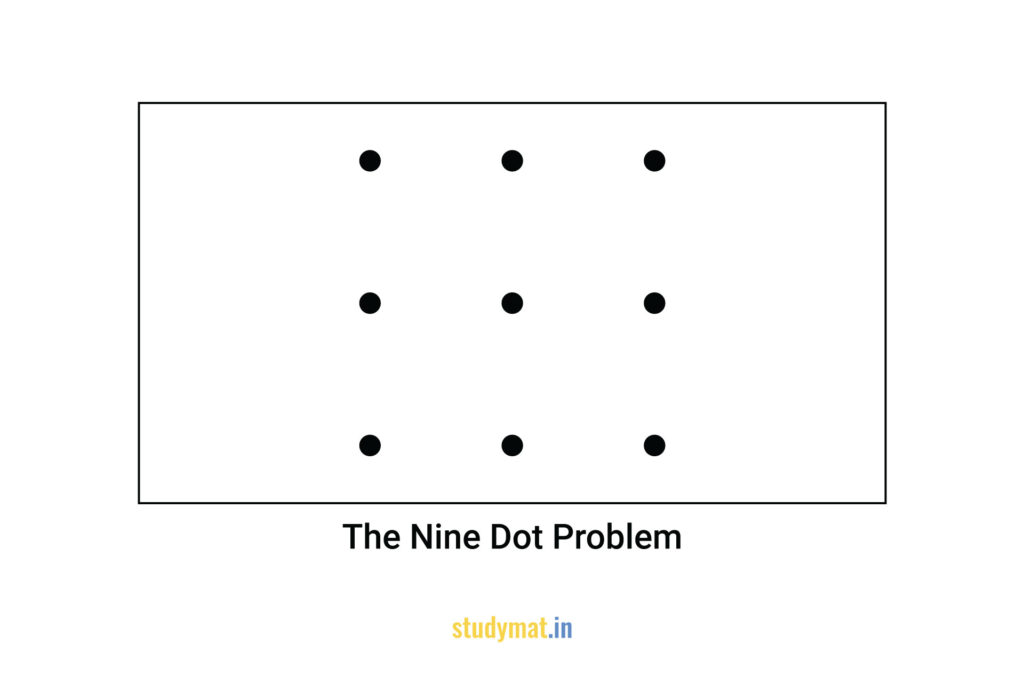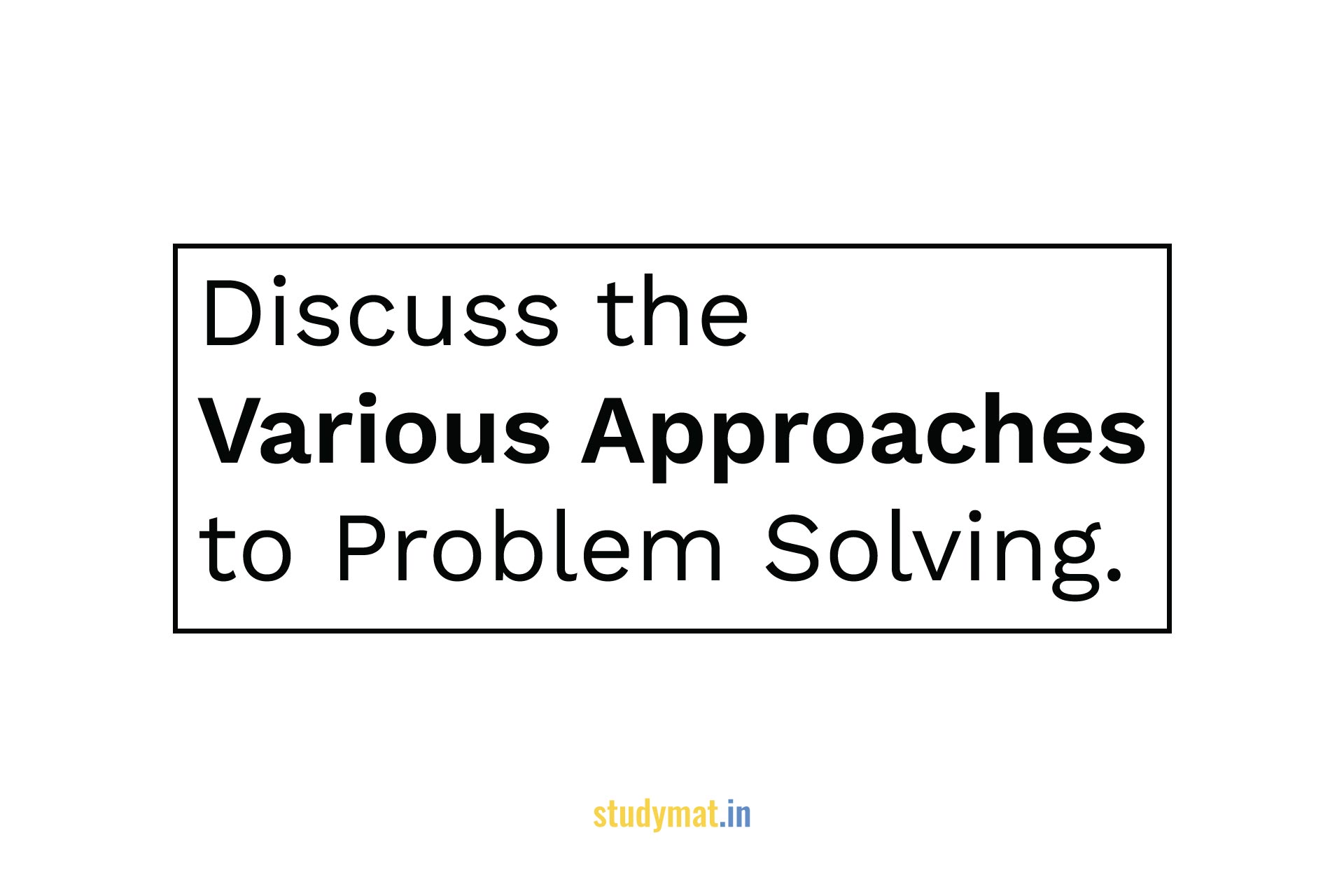In this article, we will Discuss the Various Approaches to Problem Solving.
Discuss the Various Approaches to Problem Solving.
The theoretical understandings of nature and process of problem solving from the traditional to the most recent viewpoints. Here we will be discussed three theoretical models in detail include Traditional Approaches, Gestalt Approaches, and Information Processing and Computer Simulation.
Traditional Approaches:
Traditional approaches explain problem solving in terms of principles of associative learning. It derived from the studies of classical and instrumental conditioning. According to some theorists, an individual enters a problem situation with an existing complex of stimulus-response associations as a result of previous experience. The problem is more likely to evoke some of these associations than others. Problem difficulty will depend on the strength of the correct association relative to the strength of other incorrect associations. In the course of problem solving, the associative complex gets rearranged as some tendencies are weakened through extinction (failure) and others strengthened through reinforcement (success). This viewpoint stresses the transfer of previous learning to the problem situation and to the learning which takes place during problem solving.
Read Also:
Explain the Key Issues in the Study of Cognitive Psychology.
Gestalt Approaches:
Gestalt psychologists proposed a different view of problem solving. They emphasised the importance of the structure of the problem situations and the formation of new combinations of old ideas. They were mainly interested in how people solve problems by rearrangement of objects. Kohler described a well-known example of the problem in his book, ‘The Mentality of Apes’. Kohler hung some fruits from the top of a cage to reach it. The cage contained some sticks and crates. The solution depended on finding a correct way to rearrange the objects. According to the Gestalt analysis, solving the problem required the reorganisation of the objects into a new structure. They argued that discovering the correct organisation generally occurred as a flash of insight. Insight is the sudden discovery of the correct solution following a period of incorrect attempts based primarily on trial and error. Insightful solutions seem to happen in a flash.
Read Also:
Describe Waugh and Norman’s Model of Memory.
Gestalt psychologists (Wertheimer) distinguished between reproductive and productive thinking. Reproductive thinking requires the application of tried-and-true paths to a solution. By using rote memory, the thinker reproduces a series of steps that are known to produce a workable answer. On the other hand, productive thinking requires insight and creativity. According to the Gestalts view, the thinker must see a new way of organising the problem, a new way of structuring the elements of thought and perception.
A classic problem calling for productive insightful thinking is the nine-dot problem which is shown below:

The problem is to connect the nine dots with just four straight lines, without lifting your pencil from the paper in drawing the lines. To think productively in this problem situation, one must restructure the problem, to throw off the unnecessary assumption that the lines must lie within the visual boundaries.
Related Search:
Discuss the Perceptual Blocks to Problem Solving.
Information Processing and Computer Simulation:
Several researchers have tried to program the computer to perform tasks that human beings do. Such computer simulation research has had a deep influence on the psychology of human cognitive processes. The method consists of programming a computer to work in a definite manner and comparing its performance to that of human subjects given the same tasks. Researchers using computer simulation have made major contributions to the development of the information processing view of problem solving.
A problem requires a person not only to register information from the environment but also to operate on, modify, or transform that information in some way to reach a solution.
The solving problem also requires the retrieval of both factual and procedural knowledge from long term memory. Specifically for longer problems, reaching a solution might involve repeated storage and retrieval of information generated early in the problem for use in later stages. Even this brief listing indicates that problem solving is not a single cognitive process but rather involves a number of activities that need to be accurately executed and organised to be successful.
Related Search:
Compare and Contrast the Behaviouristic and Innate Theory of Language Acquisition.
In the early 1980s, the most promising kind of theory involves computer simulation. In the last 20 years, several computer simulation theories of problem solving have emerged. Newell, Shaw and Simon developed the General Problem Solver (GPS) in 1958. It introduced a way of looking at problem solving which has influenced all problem solving theories virtually.
Follow us:
If you like this article, you can Follow us on Facebook.
Also, you can Join our Official Facebook Group for QnA Sessions and Discussions with the worldwide IGNOU community.

